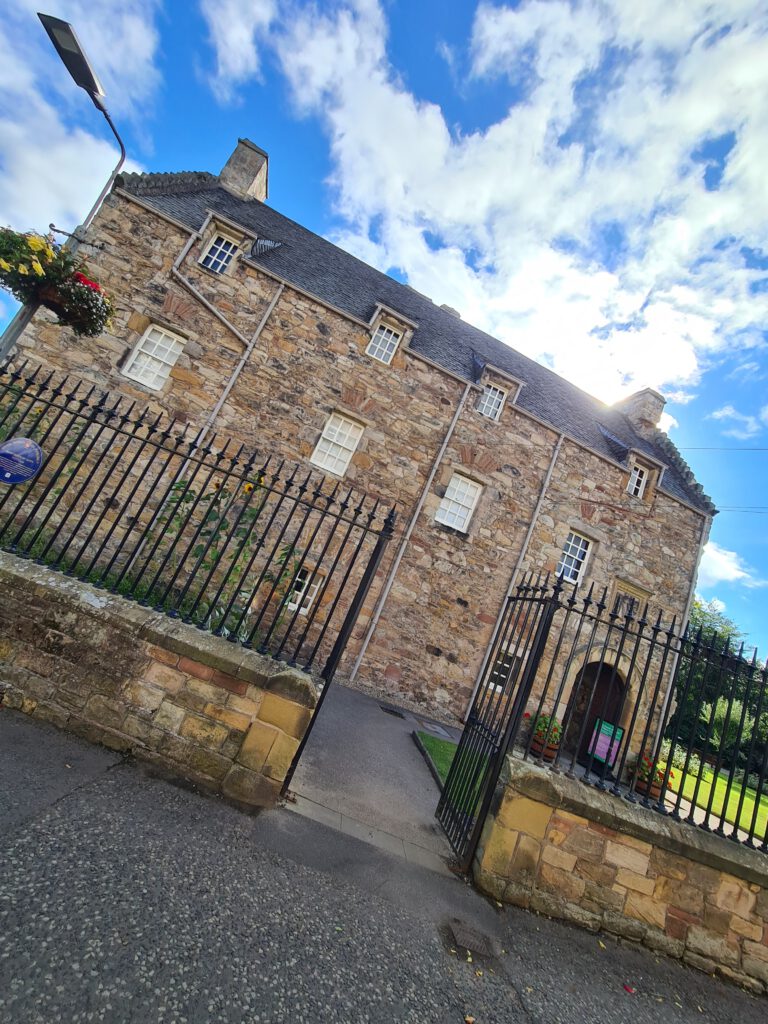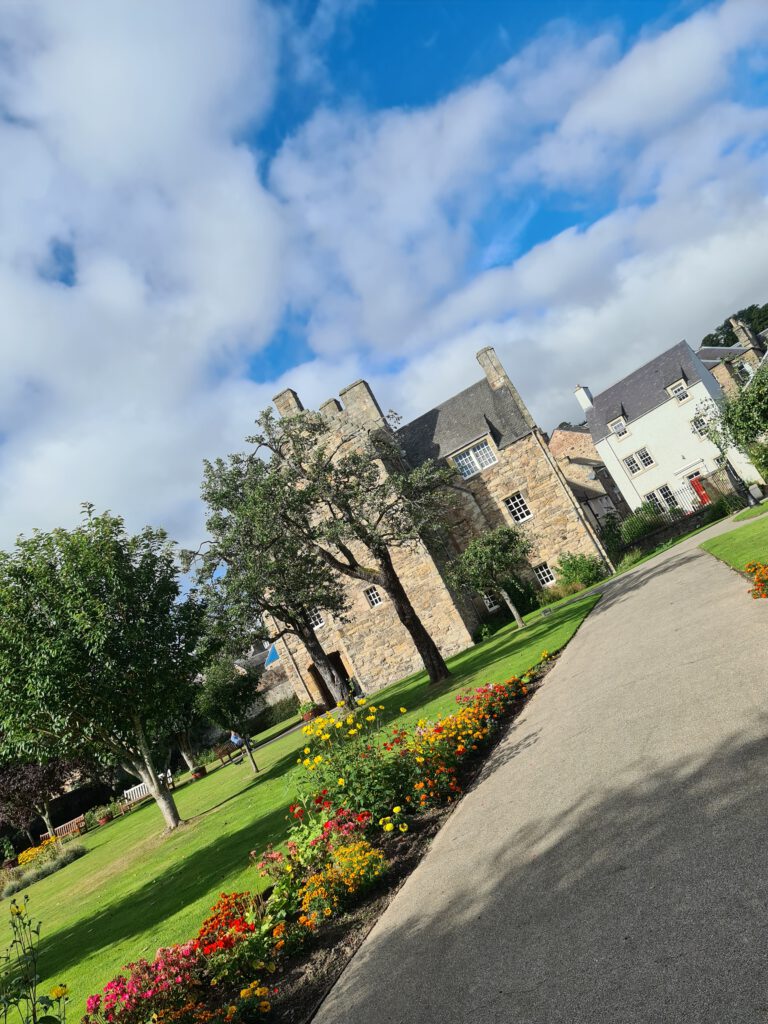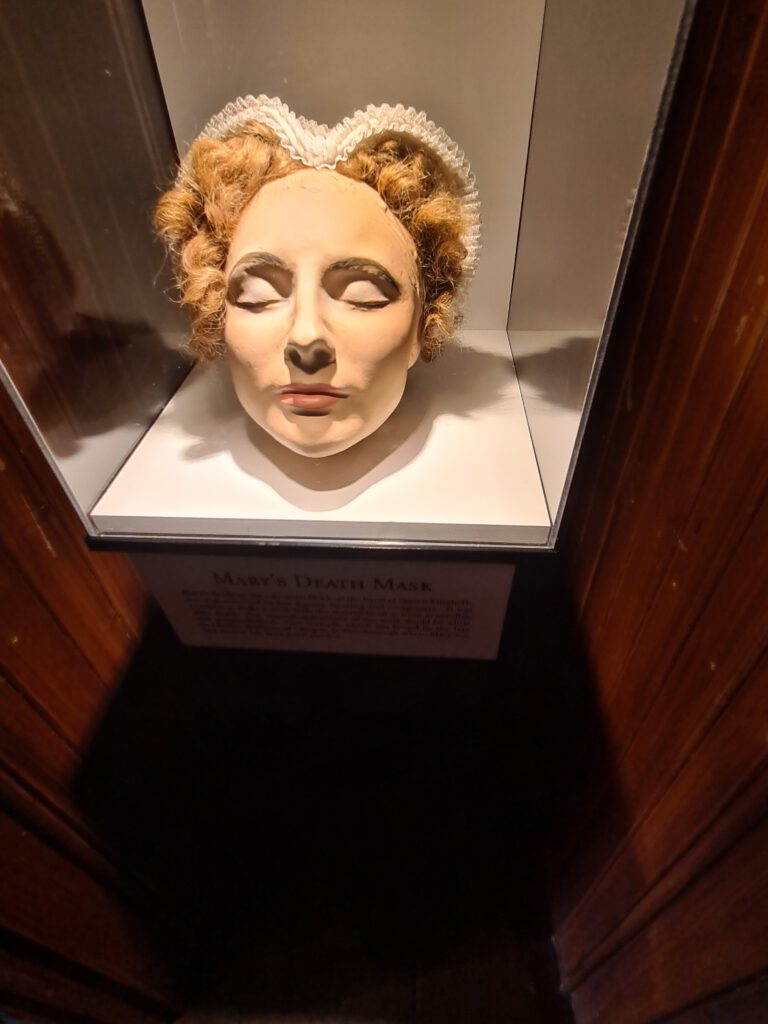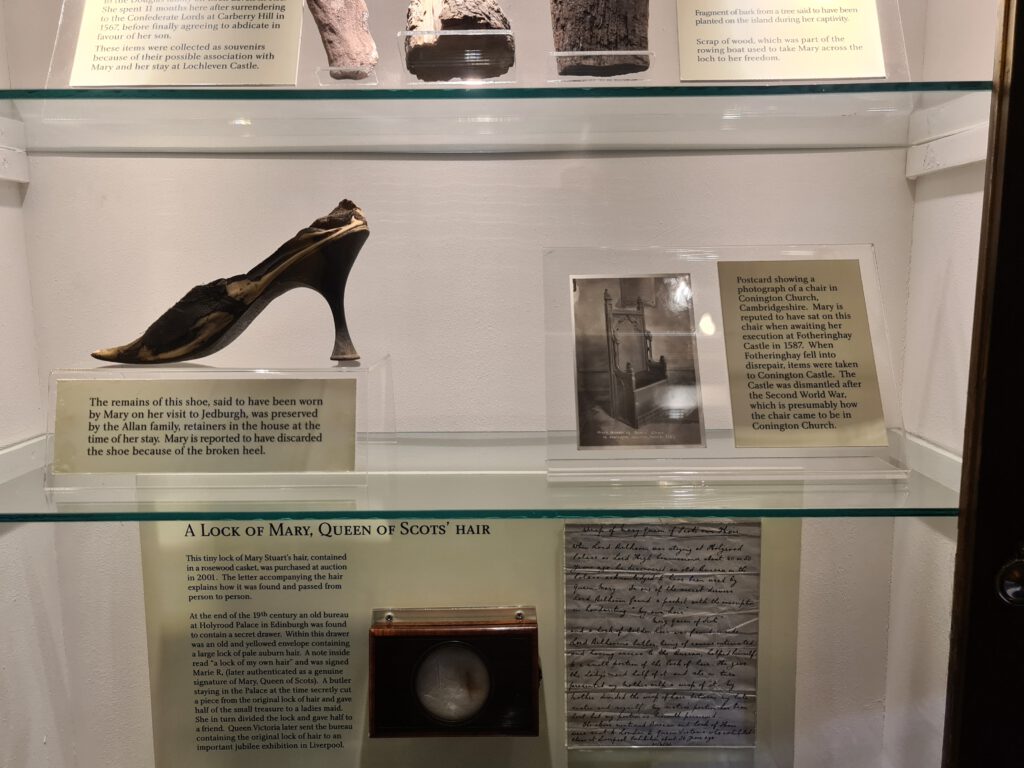The Mary Queen of Scots House is a listed building from the sixteenth century which is located in Jedburgh and is named after the famous monarch who spend a couple of weeks in it in 1566. Since 1930 it is opened to the public and used as a museum: ‘Mary Queen of Scots Visitor Centre’. In the museum to this day, you can find the story of Queen Mary for the last thirty years of her life. Even though it is highly debated about if the famous queen really stayed there or not the building deserves its iconic name.
The house not only displays painting and objects from the times of Mary Queen of Scots but also explores a bit of the cult that has grown up around her.

The queen’s month in Jedburgh in 1566 is said to have been a turning point in her life which is one reason for the museum being erected. The house has been held by the Scotts and perhaps the Kerrs for years before the queen even visited.
The House itself was built in the sixteenth century close to the Jed Water and the famous Jedburgh Abbey, originally the entrance to the house has been from Canongate Bridge, through todays gardens in which you can still find some of Jedburgh’s famous pear trees, which are descendants of the original pear trees planted around the Abbey of Jedburgh in the early 1800s.

In 1928 the house was given to the town and was restored under supervision of architect John Wilson Paterson of Edinburgh and opened to the public in 1930. 41 years later it became a Category A listed building and since then is protected.
The three-storey stone building connected with a four-storey tower, on first looks looking like one and the same building. These days the house offers the visitor a free possibility to view artefacts and boards explaining the history of the building and background of Mary’s life and eventual execution, housing a coloured death mask of the famous monarch.

Just as the Castle Jail of Jedburgh and so many other buildings in Scotland, the house is thought to be haunted, including the story of an unexplained smell of flowers in the rooms which were used by Mary, and of course stories of mysterious noises such as the rustling of a skirt.
Throughout centuries Mary Queen of Scots has been a mystery in many ways and she still is. There is no evidence for all the things and stories evolving around her person, but one thing is for sure, her life was a tragedy and her time in Jedburgh unfortunately can in some respects be counted as the beginning of this tragedy, or at least the steep way downhill towards her execution which her life took from her stay on.

Today the museum is definitely worth a visit and the wee gift shop has some nice things to offer, I can really suggest leaving a wee donation there since this is what the building needs to be restored over time and offer many more people the chance to learn more about one of the most mysterious and important people in Scottish history who also lay the base for a United Kingdom, through her son.


You could certainly see your enthusiasm in the article you write.
The sector hopes for more passionate writers like
you who aren’t afraid to mention how they believe.
At all times go after your heart.